The integration of crypto payments and AI is not merely a simple technological overlay, but rather a reconstruction of the economic logic of "value transfer - data processing - user incentives," giving rise to a new business paradigm.
Author: Oak Grove Ventures Research Team
Article Overview
With the deep integration of the Web3 ecosystem and artificial intelligence technology, the crypto payment sector is undergoing a paradigm shift from tool attributes to ecological empowerment. This report focuses on the cutting-edge direction of "crypto payments + AI," revealing how technological integration reconstructs payment processes, user incentives, and ecological interaction models through the analysis of three cases: Crossmints solving the dilemmas of Boba Guys, the crypto payment protocol AEON designed for AI agents, and the collaboration between Gaia Network and MoonPay.
The core of technological integration lies in: AI endowing payment systems with dynamic decision-making capabilities, while blockchain provides a trusted execution environment for AI agents, forming a closed loop of "data on-chain - intelligent processing - value transfer." According to MarketsandMarkets' forecast data, the market size for AI agents is expected to grow from $5.1 billion in 2024 to $47.1 billion in 2030, with a compound annual growth rate of 44.8%. As a value carrier, crypto payments are reshaping the user interaction paradigm in Web3— the digital transformation of traditional scenarios is accelerating with "cryptocurrency payments + AI economic brain" as the engine.
This trend further proves that technological synergy is breaking down the barriers between on-chain and off-chain, providing replicable transformation paths for fields such as DeFi and retail: user-centric, linking data value with crypto payments, leveraging AI to achieve intelligent collaboration of assets and behaviors, and pushing the value internet from concept to the critical point of large-scale application.
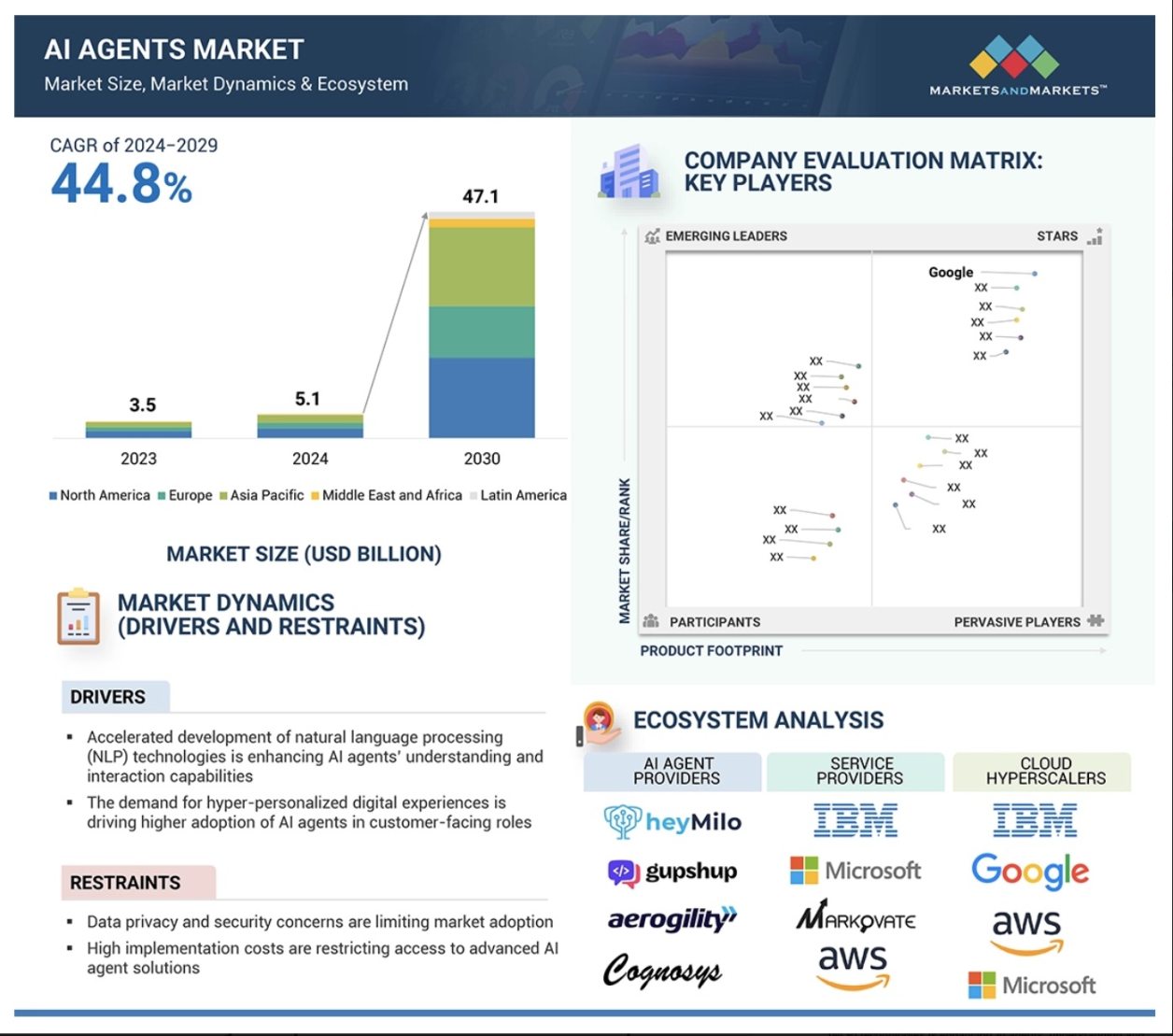
I. Why is Crypto Payment Suitable for AI? — The Mechanism Basis of Integration Advantages
The reason why crypto payments have become the preferred execution path for AI systems lies in the natural synergy in their operational mechanisms. Compared to traditional payment methods, crypto can provide AI agents with greater calling freedom, stronger automation capabilities, and better response efficiency, making it an indispensable infrastructure for "intelligent execution."
Firstly, crypto payments support native automatic invocation, allowing AI to directly generate and operate wallets to complete payments, authorizations, interactions, etc., truly realizing "machines as users." Secondly, on-chain transactions are characterized by openness, transparency, and traceability, with each payment serving as trustworthy data, providing a real anchor point for AI's interpretability.
Moreover, crypto possesses multi-chain compatibility and micro-payment capabilities, adapting to AI's high-frequency, low-value payment needs across multiple scenarios; at the same time, on-chain behaviors can also be analyzed and utilized by AI, forming a closed-loop mechanism of payment - data - feedback, further enhancing the system's intelligent response.
Overall, crypto payments are not only execution tools for AI but also an important component of its operational strategies and incentive mechanisms. The combination of the two provides ample space for subsequent product innovation and business model implementation.
II. Project Case Analysis
2.1 Crossmints: Empowering AI Payments with Web3 Infrastructure
Crossmint, as a leader in the Web3 infrastructure field, has created an efficient integrated payment toolchain for enterprises and developers, endowing AI agents with real economic behavior capabilities and achieving deep integration of crypto payments and intelligent execution. Its system supports one-click wallet generation, on-chain contract invocation, automated transaction execution, and is compatible with mainstream networks such as Ethereum, Polygon, and Solana.
Notably, Crossmint offers dynamic inter-chain switching capabilities. When the Ethereum network experiences congestion leading to skyrocketing transaction fees and extended confirmation times, the system can monitor the operational status of various chains in real-time and intelligently switch to better execution networks like Polygon based on multi-dimensional data such as fees and transaction speed, all without manual intervention, significantly improving transaction efficiency and stability.
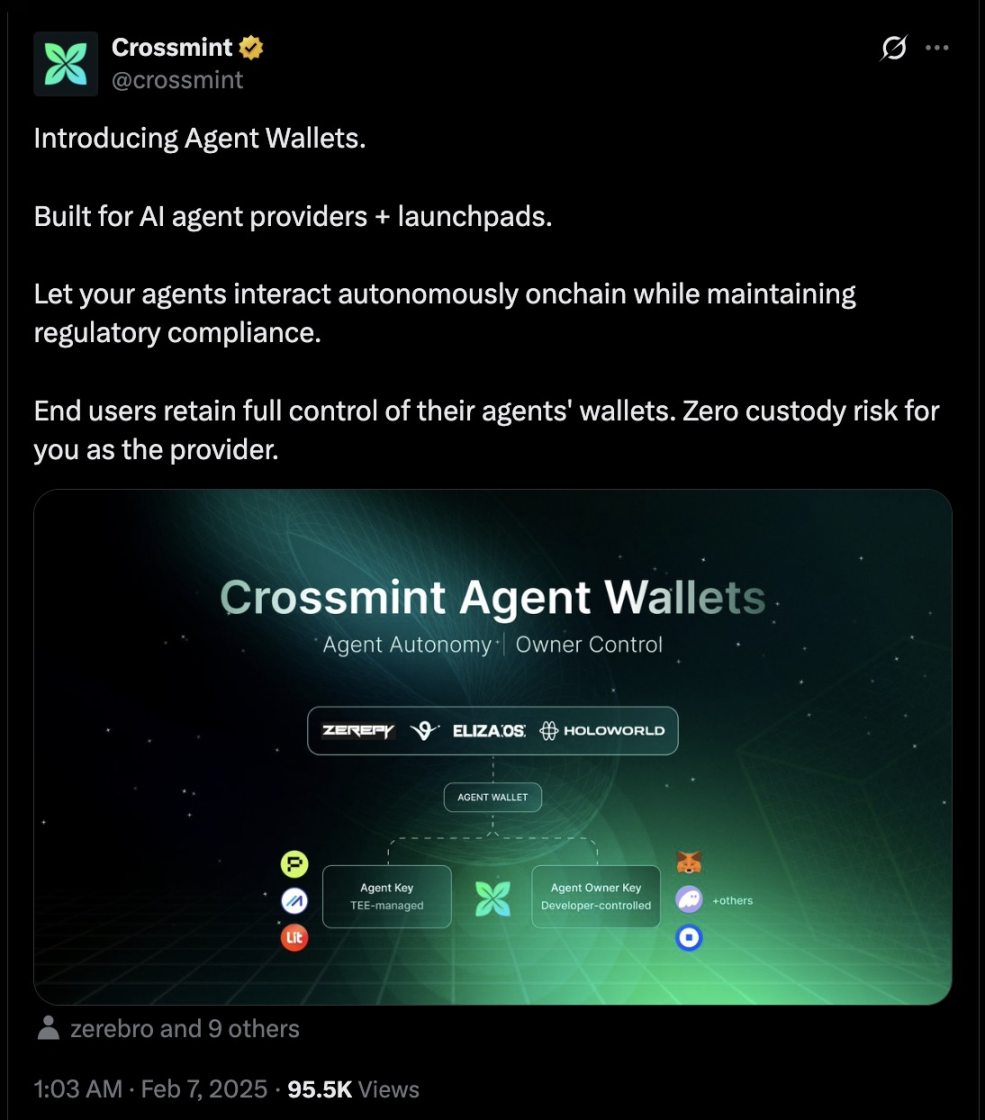
Crossmint has achieved remarkable results in promoting the integration of crypto payments and AI, as illustrated by its collaboration with Boba Guys.
2.1.1 Boba Guys + Crossmint Case: AI-Driven On-Chain Crypto Payment Loyalty Program
- Core Summary
Boba Guys is a well-known milk tea brand in the United States, facing the issue of a disconnect between traditional payments and user incentives. Boba Guys built an AI-driven on-chain loyalty program based on Solana through Crossmint, deeply integrating crypto payments with user behavior data to achieve the digital transformation of traditional retail scenarios. The project integrates automatic wallet creation, seamless transaction experiences, and multi-chain support technology, utilizing AI to analyze consumption data and generate personalized marketing strategies, significantly enhancing user engagement and payment efficiency.

Core Pain Points of Boba Guys
- The disconnect between traditional payments and loyalty programs prevents the advantages of crypto payments in user incentives from being realized.
- Lack of AI technology support makes it difficult to achieve intelligent analysis of payment data and user behavior.
Crossmint's Corresponding Solutions
- Integration of crypto payments
- Automatic wallet creation: Users generate a crypto wallet upon registration, supporting mainstream cryptocurrency payments.
- Seamless transaction experience: The payment process does not require manual handling of gas fees, and transaction information is recorded on-chain in real-time.
- Multi-chain support: Compatible with multiple blockchain networks such as Ethereum and Polygon.
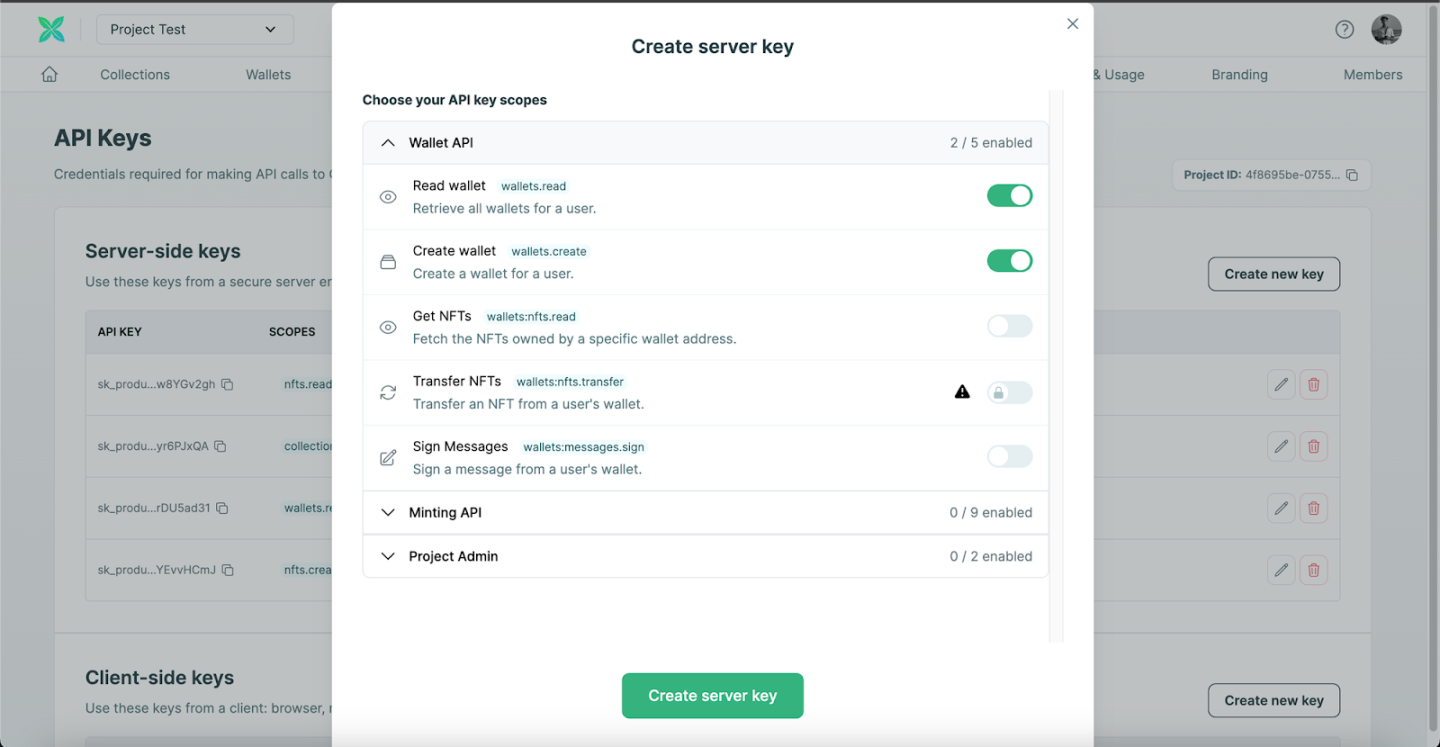
AI Applications
- Behavior analysis: Establish user profiles based on consumption amount, frequency, category, time, etc.
- Personalized recommendations: Push exclusive offers based on user profiles and recommend new products for tasting based on historical purchase preferences.
- Dynamic incentives: Adjust the points redemption ratio based on activity levels and issue retention rewards to churned users.

Application Results
- In less than 3 months, over 15,000 members have joined the program.
- Compared to non-members, loyal members' store visit frequency increased by over 244%.
- Loyal members' spending is 3.5 times higher than that of non-members.
Model Innovation and Industry Insights
This case has pioneered a new retail paradigm of "crypto payments as user incentives": by transforming consumption behavior into on-chain verifiable and transferable digital assets (such as NFT rewards), Boba Guys not only enhanced user repurchase rates but also built a decentralized membership ecosystem.
Crossmint's AI technology plays the role of a "data hub" in this process: it achieves real-time on-chain recording and intelligent analysis of payment data while reducing operational costs through automated strategies. This provides a replicable transformation path for traditional industries such as retail and dining: using crypto payments as an entry point and AI algorithms as the engine, reconstructing the closed loop of "payment - data - incentives," and promoting the upgrade of offline scenarios to digital and intelligent.
2.2 AEON: AI-Driven Crypto Payment Protocol, Restructuring Agent Execution Paths
Project Positioning
AEON is a crypto payment protocol designed for AI agents, aiming to provide a cross-chain, highly available payment execution layer. Unlike traditional payment systems, AEON is not a single application but serves as an embeddable payment interface for various automated agents, smart contracts, and Web3 applications. Since the end of 2024, the project has rapidly expanded and now covers multi-chain ecosystems including BNB Chain, Solana, TON, TRON, and Stellar.
2.2.1 AI-Driven Payment Execution Path
Unlike other cases that use AI for analysis and recommendations, AEON focuses more on building payment capabilities that AI can directly invoke. In other words, its goal is to enable AI agents to autonomously and securely complete real payment tasks, thereby promoting the implementation of automated systems in real transaction scenarios. When users issue natural language commands such as "book a flight" or "buy coffee" through AI, the AI can directly call the AEON API to generate payment requests, completing amount recognition, asset selection, cross-chain exchange, and settlement without manual intervention.
Its mechanism includes two key designs:
Payment Intent Recognition Mechanism (KYA): The system uses language models to determine whether the AI truly understands the task content and verifies whether it has payment permissions, thus preventing erroneous operations and risky command executions.
Multi-Chain Intelligent Routing: Dynamically selects the optimal payment path based on real-time fees and network congestion, enhancing transaction efficiency.
This architecture allows various AI agents to go beyond information processing and recommendations, enabling them to truly execute commercial behaviors, thus expanding the autonomy and collaborative efficiency in Web3 scenarios.
2.2.2 Application Implementation and Ecological Integration
Since 2024, AEON has launched the "AI Payment as IT Foundation" roadmap, expanding applications to multiple countries and ecological scenarios:
Offline Scene Expansion: AEON has implemented a QR code payment system in Southeast Asia, such as Vietnam, where AI agents can automatically complete the entire process of scanning, exchanging, and paying.
Token Ecosystem Integration: AEON supports various native crypto assets for payments and has connected with over 10,000 merchants, covering electronic consumption, life services, digital content, and other daily applications.
Agent-to-Agent Collaboration: AEON also supports multi-agent module collaboration, such as an intelligent execution model where "information agents generate orders - payment agents complete payments."
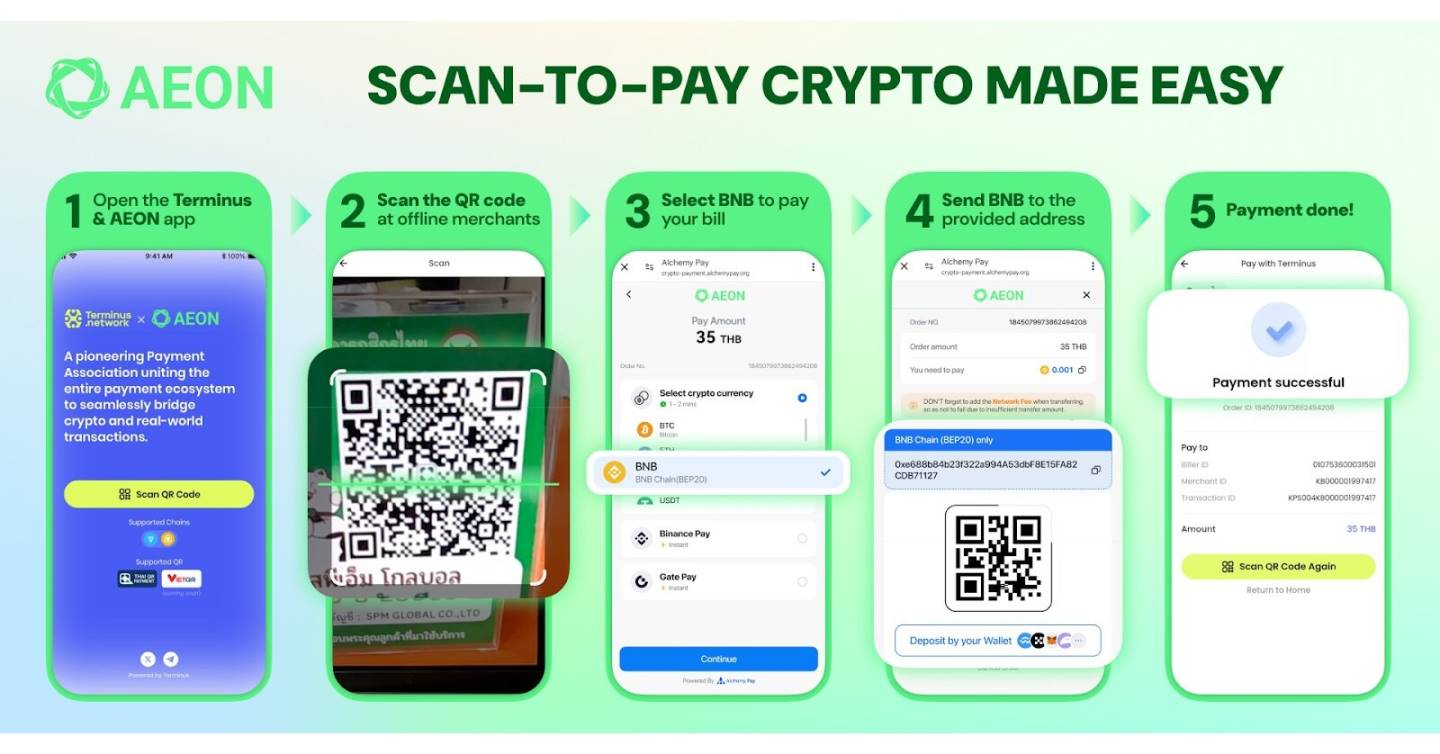
2.2.3 Diagram: Integration Logic of AI and Payment Processes
The following two diagrams illustrate the AI agent invocation path of AEON Pay in practical use, as well as the technical interaction details.
Figure 1: Standard Flowchart of AI Agent Invoking AEON Pay

After the user command is parsed by the AI agent, the payment operation is initiated through the AEON Pay SDK or API. The system completes the on-chain execution and provides feedback to the user and agent, achieving a closed loop.
Figure 2: Interaction Timing Diagram of AI Agent + AEON Pay Invocation
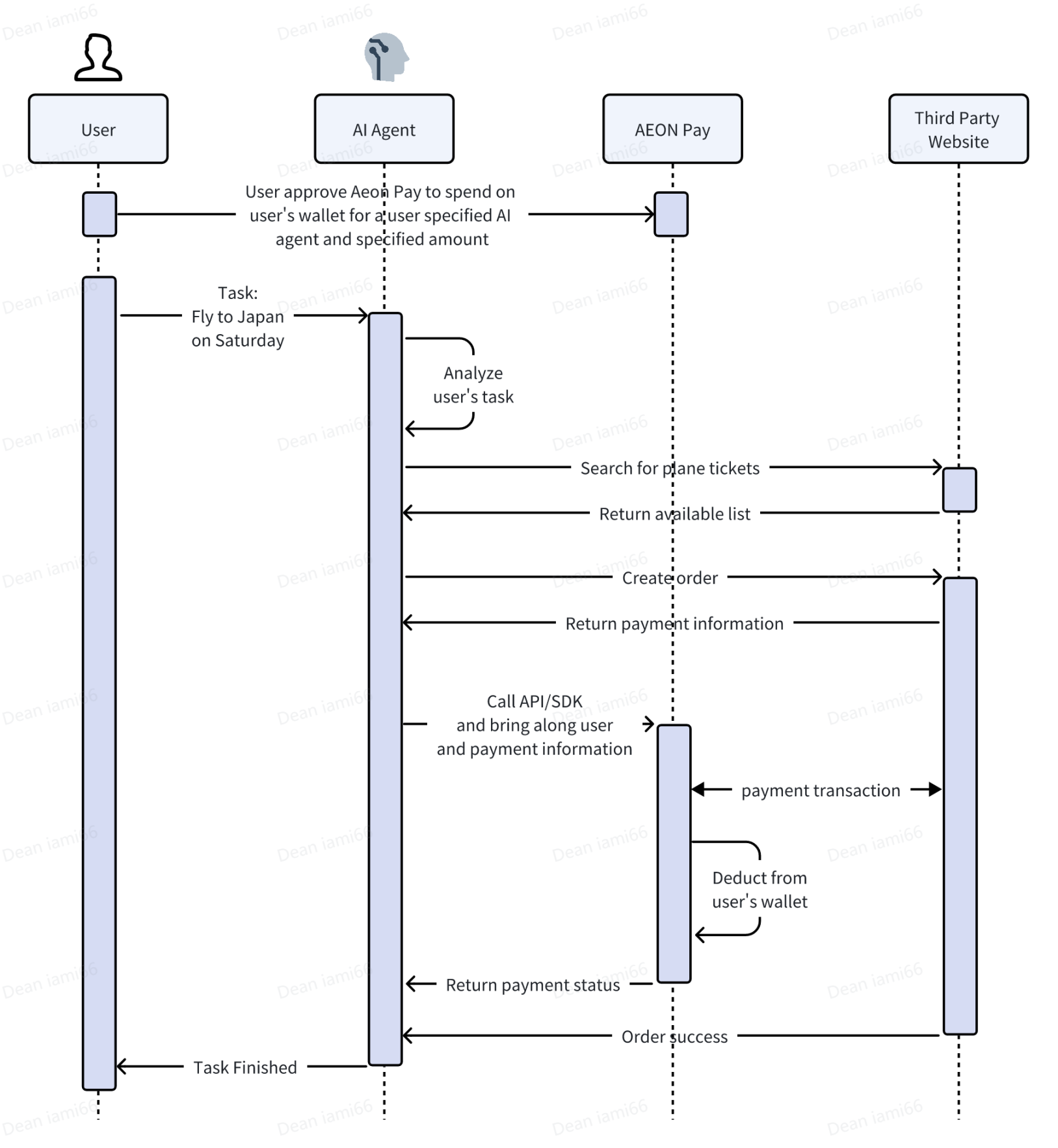
This shows the complete interaction chain of "User → AI → AEON → Merchant." The task starts from a natural language initiation and goes through five stages: agent analysis, order creation, payment confirmation, on-chain deduction, and status feedback, completing the automated payment task.
Industry Significance and Future Outlook
AEON demonstrates a standardized path for "AI agent-to-pay": abstracting payments as services for agents to invoke and execute automatically as needed. This architecture not only enhances the composability and intelligence of payment systems but also brings new execution logic to the Web3 ecosystem.
In the future, AEON plans to expand to off-chain consumption systems supported by Visa and Mastercard, building a seamless bridge between Web3 native users and the real payment world, further promoting the payment paradigm of "AI initiation—Crypto settlement—Real-time completion."
2.3 Collaboration between Gaia Network and MoonPay: Promoting the Integration of Crypto Payments and AI
2.3.1 Background of the Collaboration
MoonPay is a leading global provider of crypto payment infrastructure services, supporting instant exchanges between fiat and cryptocurrencies, covering over 180 countries, and processing more than $15 billion in transactions annually. Gaia, on the other hand, is a decentralized AI agent network that allows developers to create, deploy, and monetize AI agents, with its core product, Mother DAO, serving as an AI agent launch platform within the Ethereum ecosystem.
2.3.2 Synergistic Effects and Technical Integration Post-Collaboration
Deep Synergy between Payments and AI Agents
Automated Transaction Processes: Users trigger Gaia agents to call the MoonPay API through natural language commands (e.g., "Buy $100 worth of ETH"), completing the exchange from fiat to cryptocurrency and on-chain transfer without manual wallet operations.
Intelligent Pricing and Settlement: Gaia agents can dynamically adjust service pricing based on market fluctuations, while MoonPay completes cryptocurrency settlements in real-time, supporting stablecoins like USDC and ETH as well as mainstream assets.
Empowering the Developer Ecosystem
Low-Code Integration: MoonPay provides pre-built payment modules (such as embedded payment windows), allowing developers to quickly integrate payment functionalities into Gaia agents via API.
Cross-Chain Interoperability: MoonPay's multi-chain support (e.g., Solana, Polygon) helps Gaia agents expand application scenarios, such as executing high-frequency trading within the Solana ecosystem.
Upgraded User Experience
Simplified Fiat Entry: Non-crypto users can directly purchase AI agent services using fiat through MoonPay, lowering the barrier to entry for Web3.
Transaction Transparency: On-chain transaction records can be checked via blockchain explorers, allowing users to track payment statuses and agent execution results in real-time.
3.3.3 Market Impact and Data
User Growth: Gaia completed its first fully autonomous hackathon in 2024, attracting over 2,000 developers, and after the launch of the Mother DAO platform, monthly active users exceeded 50,000.
Transaction Scale: Helio had processed over $1.5 billion in transactions before its acquisition, and its on-chain payment functionality is expected to enhance transaction efficiency by 30% after collaborating with Gaia.
Industry Recognition: MoonPay became one of the first crypto payment companies in Europe to obtain MiCA licensing in December 2024, enhancing its credibility in collaboration with Gaia.

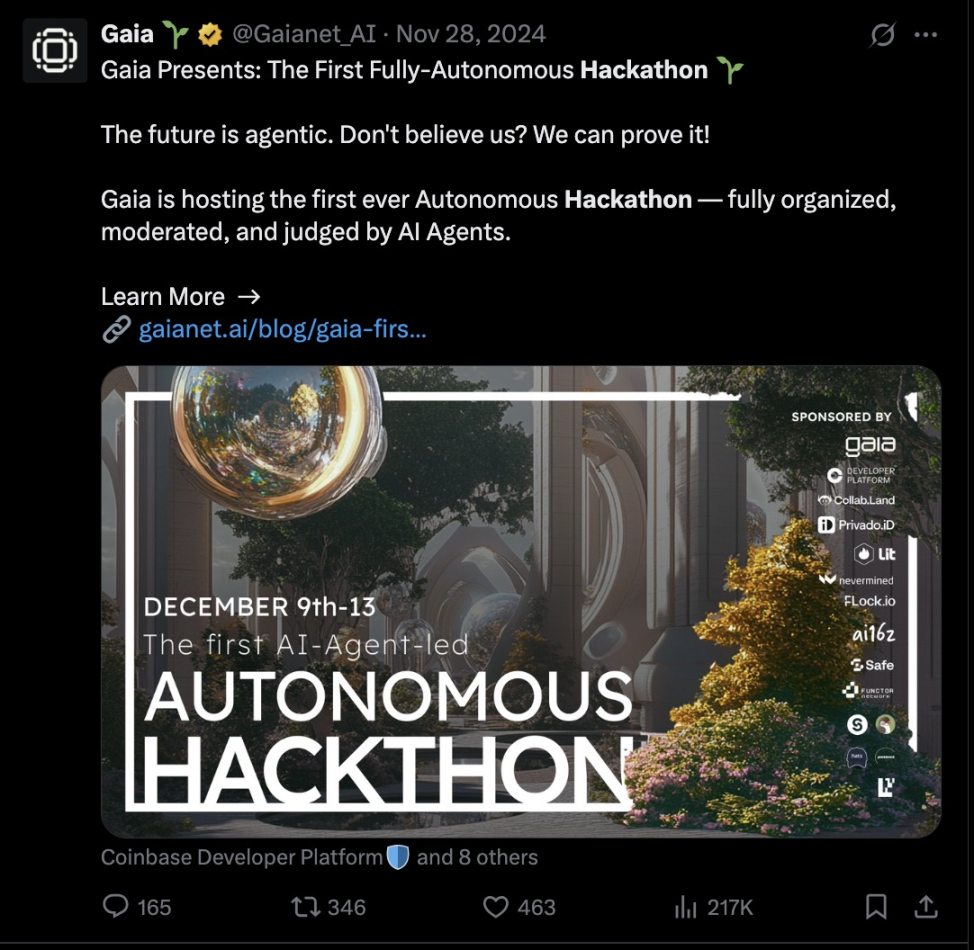
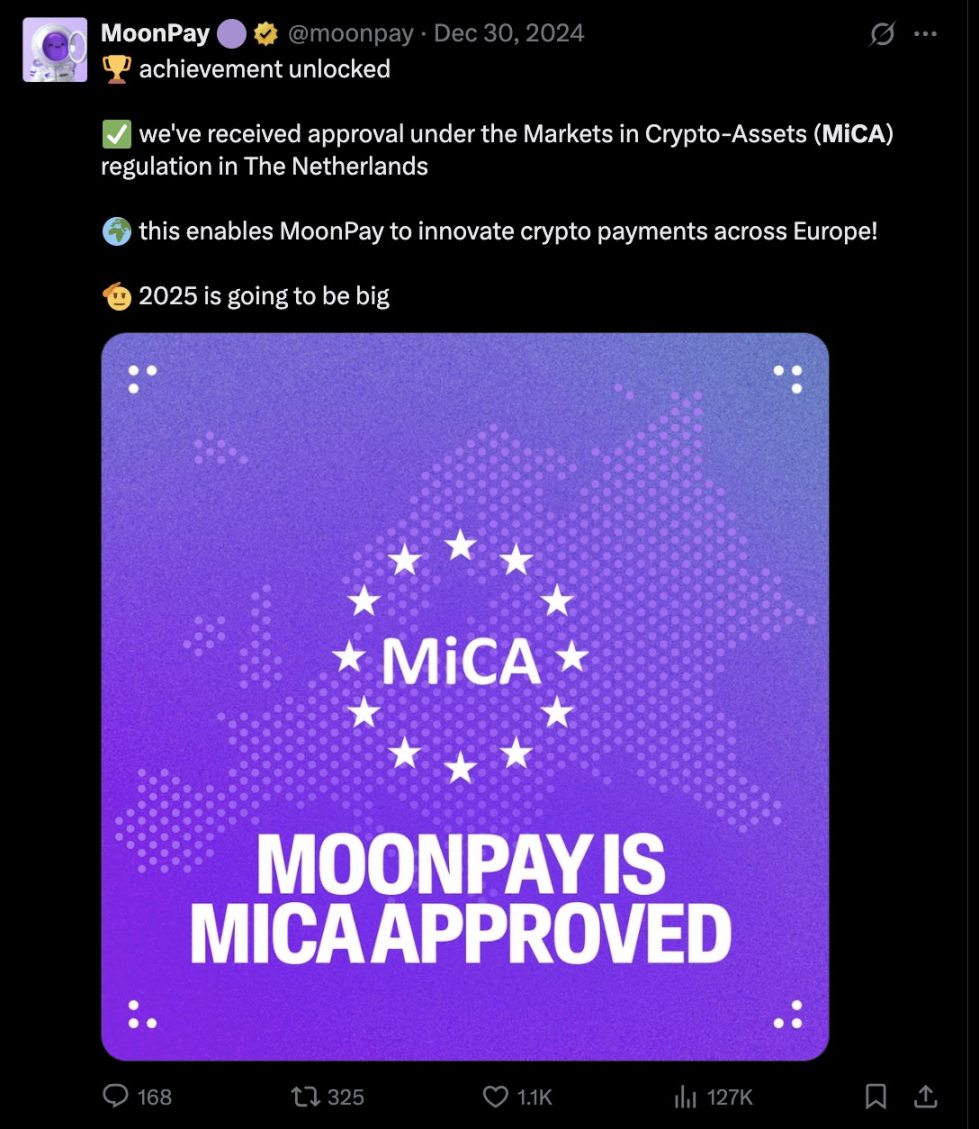
The collaboration between MoonPay and Gaia marks a new stage in the integration of crypto payments and AI technology. By integrating payment infrastructure with a decentralized AI agent platform, both parties provide developers and users with a comprehensive solution from creation and deployment to monetization. Despite facing technical complexities and compliance challenges, this collaborative model offers important references for the intelligent development of the Web3 ecosystem.
III. Industry Challenges and Future Outlook
3.1 Core Challenges
Technical Complexity: Multi-chain collaboration and AI algorithm optimization still require breakthroughs.
Compliance Risks: Significant differences exist in regulatory frameworks for crypto payments and AI technologies across different countries, such as MoonPay needing to balance innovation and compliance under multiple systems like MiCA and SEC.
User Education Costs: Although cases show lowered barriers, non-crypto users still require long-term cultivation of understanding regarding "on-chain wallets and smart contracts."
3.2 Future Trends
Scene Deepening and Lightweighting: Focus on high-frequency scenarios such as micro-payments, membership systems, and game item transactions, enhancing user stickiness through "AI + crypto payments" (e.g., replicating the Boba Guys model in convenience stores and gyms).
Infrastructure Standardization: Promote cross-platform API interoperability (e.g., technical integration between Crossmints and MoonPay), reducing integration costs for developers and forming a universal tech stack of "payments - agents - data."
Regulatory Technology Integration: AI-driven compliance checks (e.g., automatic identification of sanction lists, anti-money laundering monitoring) to achieve a dynamic balance between innovation and regulation.
IV. Conclusion
The integration of crypto payments and AI is not a simple technological overlay but a reconstruction of the economic logic of "value transfer - data processing - user incentives," giving rise to a new business paradigm. From Crossmints' retail loyalty revolution to Coinbase's autonomous payment agents, and the global infrastructure collaboration between Gaia and MoonPay, the cases demonstrate that when the "decentralized trust" of blockchain deeply couples with the "intelligent decision-making" of AI, the digital transformation of traditional industries will break through efficiency boundaries, moving towards a new stage of "automation, personalization, and globalization." As technology matures and compliance frameworks improve, this integration trend is expected to become the core driving force for the large-scale implementation of the Web3 ecosystem, ushering in a new era of "smart payment economy."
免责声明:本文章仅代表作者个人观点,不代表本平台的立场和观点。本文章仅供信息分享,不构成对任何人的任何投资建议。用户与作者之间的任何争议,与本平台无关。如网页中刊载的文章或图片涉及侵权,请提供相关的权利证明和身份证明发送邮件到support@aicoin.com,本平台相关工作人员将会进行核查。




